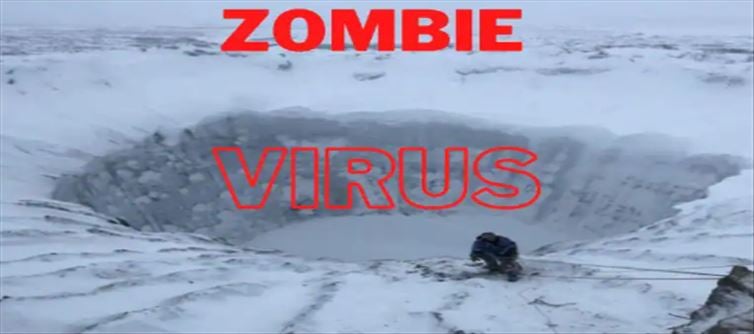
Zombie viruses could re-emerge after 50,000 years due to climate change, researchers say. Surely no one would enjoy spending a fortnight camping on the banks of the mosquito-infested, muddy Kolyma River in Russia. But virologist Jean-Michel Claverie, who made such a sacrifice, uncovered the truth about zombie viruses. These viruses are seen as another risk that climate change poses to public health. The discoveries of 73-year-old Jean-Michel Claverie have brought to the outside world a terrifying reality about global warming.
For more than 10 years, Clavery has been studying large viruses, including a recently discovered nearly 50,000-year-old virus found deep within layers of Siberian permafrost. With the planet already 1.2 degrees Celsius warmer than pre-industrial times, scientists predict that the Arctic will be free of summer ice by 2030. Concerns are being raised that a warmer climate will release greenhouse gases such as methane into the atmosphere. But inactivated pathogens are less studied. Last year, Clavery's team extracted zombie viruses from Siberian permafrost that were about 50,000 years old. All of them are infectious.
With climate change, we are used to thinking of threats from the south, referring to vector borne diseases that spread from the hot tropics. However, as the permafrost melts and releases microbes, bacteria and viruses, any danger may come from the north, said Jean-Michel Clavery, a professor at the university of Aix-Marseille in France, in an interview. A heat wave in Siberia during the summer of 2016 activated anthrax spores and led to dozens of infections. In July this year, a group of scientists published findings showing that even multicellular organisms can survive permafrost in a dormant metabolic state known as cryptobiosis. They successfully revived a 46,000-year-old roundworm found in Siberian permafrost by rehydrating it. "It's fundamental that life can be stopped and restarted," said Teimuras Kursalia, professor at the Max Planck Institute of Molecular Cell Biology and Genetics, who was involved in the study. said. That is, he says, it is natural for some organisms to slow down or suspend metabolic processes.
For years, world health agencies and governments have been monitoring infectious diseases for which humans have no immunity or drug treatments. In 2017, the World health Organization added disease 'X' to its list of pathogens. It aims to prevent or control infection. After Corona, it has become even more intense. "The World health Organization is working with more than 300 scientists to look at the evidence for all virus families, pandemics, and bacteria that can cause infections. They may be released by thawing permafrost.” Dr. Margaret Harris, spokesperson for the World health Organization said. That is, climate change can revive frozen pathogens. It sounds a warning bell that big dangers may come.




 click and follow Indiaherald WhatsApp channel
click and follow Indiaherald WhatsApp channel